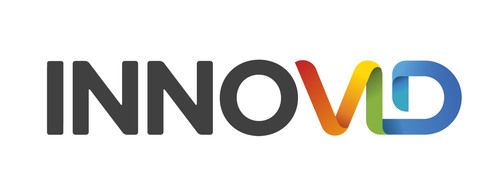| SPONSOR: Good Life Networks (GOOD:TSX-V) Video advertising is the future! Company’s A.I. makes 80,000 calculations / second, targeting 750 million users to deliver higher prices and volume. Company announced combined trailing 12 month revenue at just over $40 Million, $7.9M EBITDA, $3 Million net income. Click here for more information. |

—————————
2018 recap: What drove the programmatic advertising journey?
- Programmatic ad spending is rising firmly, with $70bn spent in 2018 alone.Â
- Last 12 months saw the emergence of new trends and major transparency initiatives driving the market.
GDPR has been the most prominent digital privacy & security law around the globe last year. It initiated a major change in data privacy and created a significant impact on mobile app usage & development process. The fundamental question that GDPR asks is – what information publishers and advertisers are requesting from their customers, re-assess what they do with that information and how that information is stored. There has been also concern regarding usage of users’ data without their permission. This can improve the overall experience of users when they visit any app/website if they understand what is going on in the background and how their personal data is being utilized. But has GDPR made the impact it was expected to? Executives from companies like Mozilla and MacDonald feel that GDPR has been a bit of a mixed bag. There haven’t been big fines levied yet. But it is expected that if 2018 is the year of implementation, 2019 will be the year of enforcement.
In-App Ads.txt
Transparency had been and will be the key focus in programmatic advertising. With more and more users moving towards in-app content consumption, the industry has been demanding a transparent framework. The IAB Tech Lab released app-ads.txt specification in beta, the app guidance that can increase the pool of authorized digital advertising inventory while reducing fraud. App-ads.txt is an extension of the original ads.txt standard which was only available for web inventory. App-ads.txt works in a similar way but relies on the app store’s web-page of a given app to find the legitimate publisher’s website/domain. There’s a clear monetary benefit for app owners to adopt App-ads.txt with the same enthusiasm as their web counterparts. When app publishers post an Ads.txt file they usually see an uptick in revenue, because bad actors can no longer easily spoof their inventory.
Artificial Intelligence
Artificial intelligence made its way into the digital advertising world. Ad tech is increasing the use of AI and machine learning to determine which impressions have the highest winning probability, thus reducing the infrastructure cost and improving the overall auction process. AI also promises to unlock new understanding of users’ behavior. It opens the possibility to reach audiences by creating powerful semantic targeting, providing a wealth of contextual data that examines not just what a publisher is writing about, but why. This helps marketers do the heavy lifting as they see fewer wasted impressions with ads that are more targeted and focused, leading to better campaign results.
Blockchain
Transparency concerns gave birth to an incredible technology –‘Blockchain’ – in digital advertising. Blockchain promises to optimize the media spend. With the implementation of the blockchain, it is estimated that the likelihood and ability to commit ad fraud would most likely lower, making the potential savings in ad dollars a huge benefit for both advertisers and publishers. When it comes to advertisers, blockchain technology could be used when ad platforms run ads and payout DSPs, exchanges and publishers. Since blockchain’s underlying technology makes it too difficult to hack, advertisers could have a process that is not only more secure for paying out publishers of their ads, but also could make fraudulent traffic less likely.
As we step into 2019, Programmatic advertising brings a set of challenges as well as opens door to a flurry of opportunities for agencies, publishers and ad tech providers. Hence all stakeholders in this ecosystem need to navigate together in order to create a truly successful habitat for programmatic advertising to grow faster.About the Author
Abhay loves to explore and work on latest technologies, building and designing cutting edge ad tech solutions. He has good knowledge and experience of IAB standards like OpenRTB protocol, VAST, VAPAID and MRAID. Rewrote and redesigned Chocolate exchange in GO Lang, achieved better performance and cost-effectiveness.
Source: http://www.adotas.com/2019/01/2018-recap-drove-programmatic-advertising-journey/







 Fortunately, rather than yet another regulation or tougher prosecution — which become barriers to entry for individual artists, inventors and start-ups — there is now a better deterrent to counterfeiting, fraud and IP theft: it is the blockchain, the technology behind cryptocurrencies like bitcoin.
Fortunately, rather than yet another regulation or tougher prosecution — which become barriers to entry for individual artists, inventors and start-ups — there is now a better deterrent to counterfeiting, fraud and IP theft: it is the blockchain, the technology behind cryptocurrencies like bitcoin. Provenance and geographical indicators
Provenance and geographical indicators Ethereum inventor Vitalik Buterin in Toronto. Some of the world’s most successful blockchain projects — Ethereum, Aion, and Cosmos, to name a few — were started in Canada. J.P. Moczulski for National PostImagine instead a world where artists decide how they’d like their music to be shared or experienced — simply by uploading a verified, searchable piece of music and all its related content online. Through the triggering of smart contracts, a song could become its own business, collecting royalties and allocating them to the digital wallets of rights owners such as songwriters and studio musicians. Artists and other creators would get paid first and fairly, rather than last and least.
Ethereum inventor Vitalik Buterin in Toronto. Some of the world’s most successful blockchain projects — Ethereum, Aion, and Cosmos, to name a few — were started in Canada. J.P. Moczulski for National PostImagine instead a world where artists decide how they’d like their music to be shared or experienced — simply by uploading a verified, searchable piece of music and all its related content online. Through the triggering of smart contracts, a song could become its own business, collecting royalties and allocating them to the digital wallets of rights owners such as songwriters and studio musicians. Artists and other creators would get paid first and fairly, rather than last and least.


